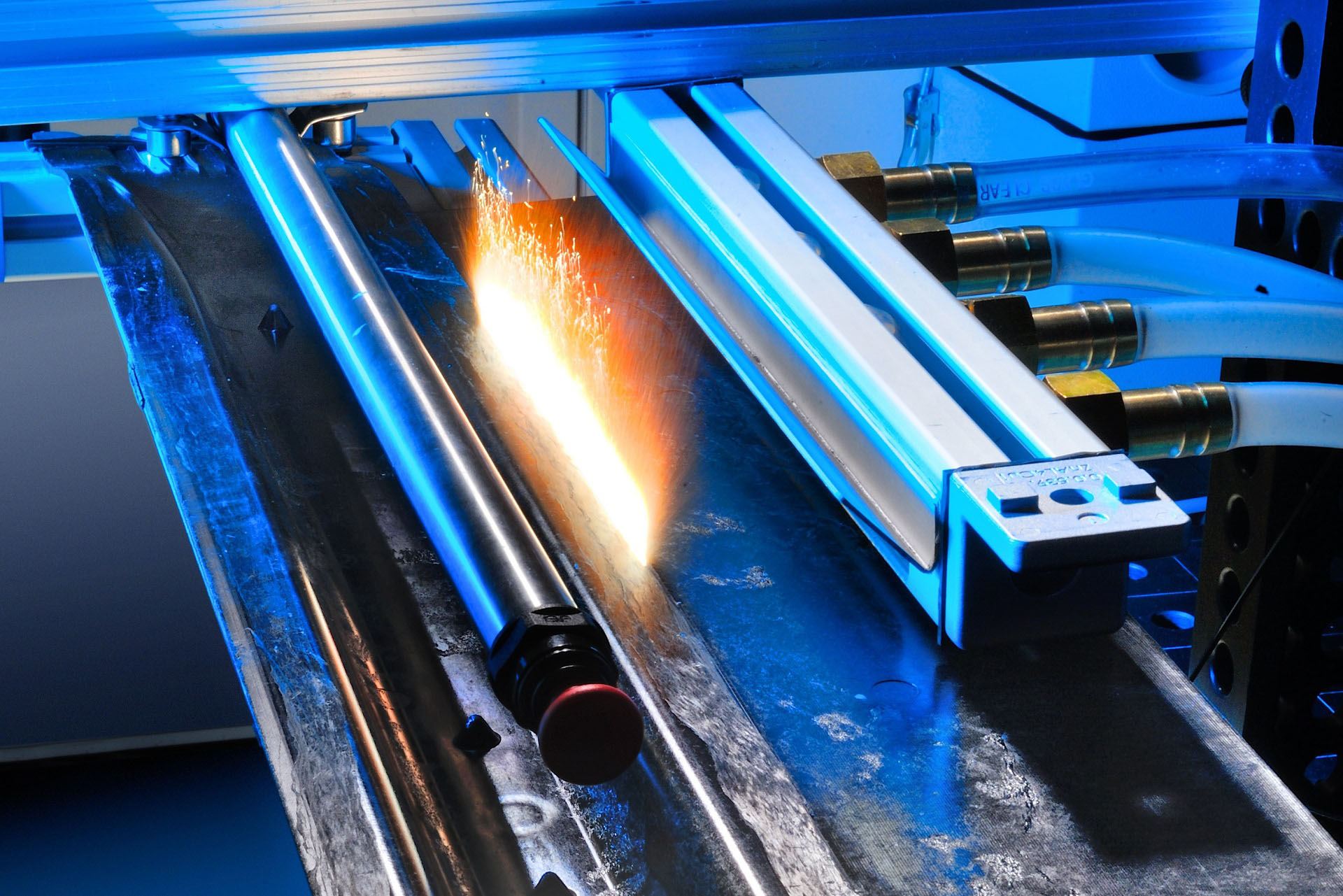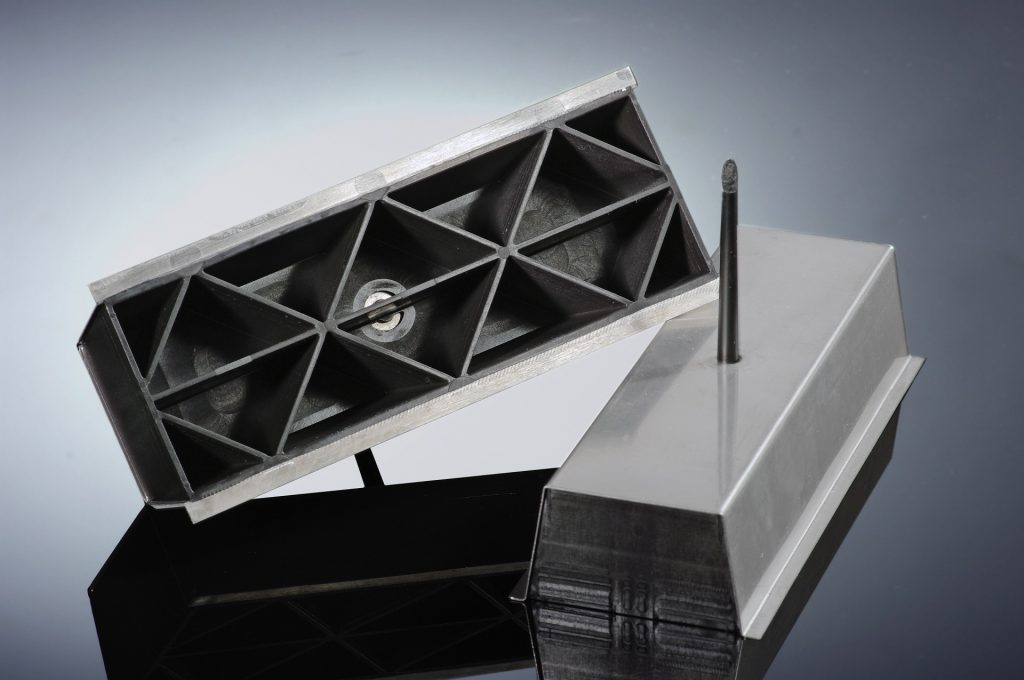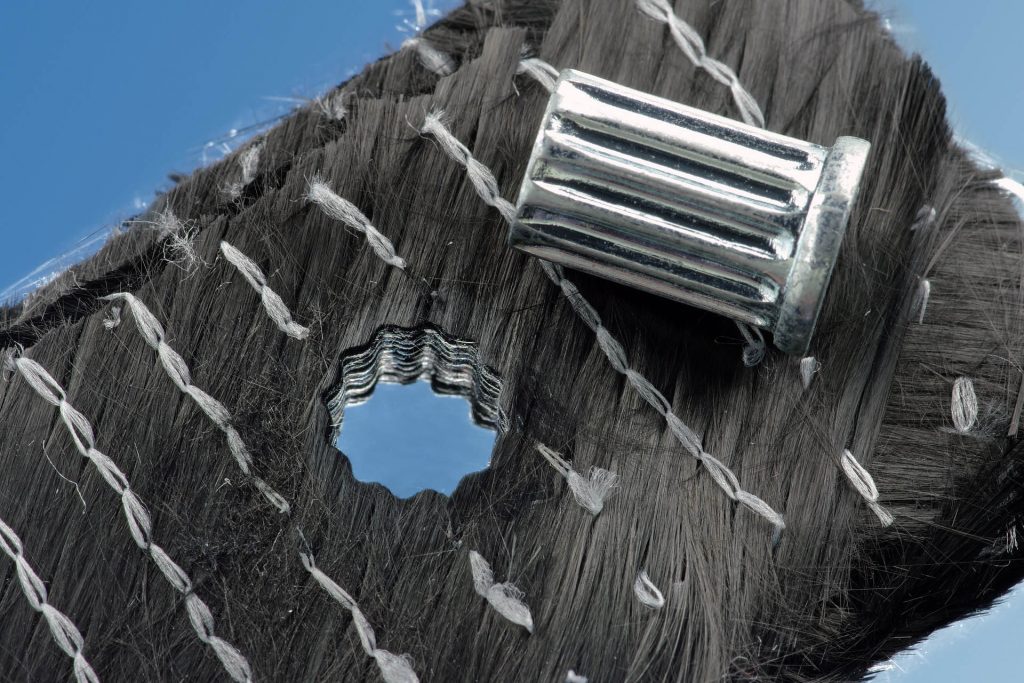
Since composites combine the advantages of dissimilar materials, they can be used to exploit great potential in lightweight construction. At JEC World 2019 in Paris in March, scientists from the Fraunhofer Institute for Laser Technology ILT will present a broad range of laser-based technologies for the efficient production and processing of composite materials. Visitors to the joint booth of the Aachen Center for Integrative Lightweight Construction AZL, Hall 5A/D17, will gain insight into joining and cutting processes as well as surface structuring.
Experts from Fraunhofer ILT are researching and developing laser processes for the economical joining, cutting, ablation or drilling of composite materials, especially in the context of their integration into existing process chains. Dr. Alexander Olowinsky, Group Leader Micro Joining at Fraunhofer ILT explains: “Mechanical processes in separation technology such as milling, sawing or water-jet cutting as well as bonding –when materials are joined – can be replaced by laser processes, which significantlyincrease the efficiency and quality of overall construction processes.”

Microstructured hybrid beam made of magnesium and short glass-fiber reinforcedplastic (PP-GF30).© Fraunhofer ILT, Aachen,Germany.
Microstructuring of Magnesium for Ultra-Lightweight Applications
Plastics and metals each have specific properties, such as malleability, strength orthermal conductivity, all of which can be combined in hybrid components. Making these hybrid compounds requires, however, that metal surfaces first have to be prepared. This can be accomplished, for example, by means of microstructuring with cw laser or micro- or nanostructuring with ultra-short pulsed (USP) lasers and different machine concepts.
The lightest metallic construction material, magnesium is characterized by a particularly high thermal conductivity. Together with the Institute for Plastics Processing IKV of RWTH Aachen University, Fraunhofer ILT is developing laser processes to microstructure magnesium, processes that subsequently enable very stable and form-fitting connections with various thermoplastics in hybrid injection molding processes.
For such processes, a single-mode fiber laser (at a wavelength of 1064 nm) produces precise undercuts in the magnesium surface at area rates of up to 1000 mm2 per second; these undercuts can be filled with plastic in the subsequent hybrid injection molding process. “For short glass fiber-reinforced plastic, we have developed hybrid connections with high tensile shear strengths up to 22.4 MPa – the components are not only extremely light but also, at the same time, extremely durable,” explains Dipl.-Wirt.-Ing. Christoph Engelmann, team leader of Plastics Processing at Fraunhofer
ILT. Moreover, since no adhesives are needed, aging processes also take place more slowly than with conventionally bonded joints.
There are few limits as to which plastics can be employed: In principle, all thermoplastic materials used in injection molding are suitable here. They open up a wide range of possibilities for connecting components together and integrating functions, which the manufactured hybrid components later offer and which cannot be produced in pure metal construction.

Trimming of a hybrid car roof bow made of glass and carbon-fiber reinforced plastic. © Fraunhofer ILT, Aachen, Germany.
Gentle Cutting Processes for Composites
When lasers are used to cut thermoplastic composite materials, in particular carbonfiber reinforced plastics, the process design generally aims to generate the smallest possible heat-affected zone. At the same time, it should maintain a productive and short processing time: Repeated, fast scanning of the laser beam along the cutting path successively removes material and goes easy on the material. “By continuously tracking the scanning field, we are able to use this procedure for large components,” explains Dr. Frank Schneider, project manager for Macro Joining and Cutting at
Fraunhofer ILT.
Laser power, scanning speed and the cooling time between the scans influence the heat-affected zone and the processing time. The scientists are optimizing these parameters and, thus, determining the best-possible settings for the material, which can also be adapted within a component in the case of hybrid parts made of a material mix. Even if materials as diverse as glass fiber- and carbon fiber-reinforced plastics should be separated, but which are stacked on top of each other, cutting can be done in one step – precisely, efficiently and without tool wear thanks to the availability of cw
high-power lasers with excellent beam quality.

USP laser beam drilled carbon-fiber preform with a star-shaped hole and positive-fit metal insert. © Fraunhofer ILT, Aachen, Germany.
Laser Drilling for Productive CFRP Component Manufacturing
In the lightweight sector, the integration of functional elements in CFRP structural components is often carried out via threaded inserts, e.g. in preforms for components in the automotive and aircraft industries. For this purpose, the inserts are placed in a form-fitting manner into mechanically drilled components and are then glued. The quality and strength of the joint depend largely on the accuracy of the drilled laminateand the bonded joint.
Particularly durable and high-quality compounds are formed when the unimpregnated carbon-fiber textile is drilled by means of USP laser radiation, into which functionalelements are subsequently inserted in a form-fitting manner. Laser scanners also make it possible to form demanding drilling contours such as star-shaped holes and, thus, the integration of load-adapted inserts. In the later infusion process, the matrix acts as an adhesive between the carbon fibers and the insert, eliminating the need for additional adhesives.
Thanks to USP laser beam machining, both preforms and consolidated CFRP components can be drilled at high quality. “The primary evaporation of the material can prevent thermal or materialographic damage in the laminate or fibers,” explains Dr. Stefan Janssen, team leader of Laser Drilling and Precision Cutting at Fraunhofer ILT. The process times from typically a few seconds to one minute and the high level of automation also support productive use of this process in CFRP component production.
Fraunhofer ILT at JEC World 2019
Find out more about laser processing of composites at JEC World from March 12 to 14, 2019 in Paris. Experts from Fraunhofer ILT will be presenting details and new developments at the joint AZL booth in Hall 5A/D17.
Press release from Fraunhofer Institute for Laser Technology ILT